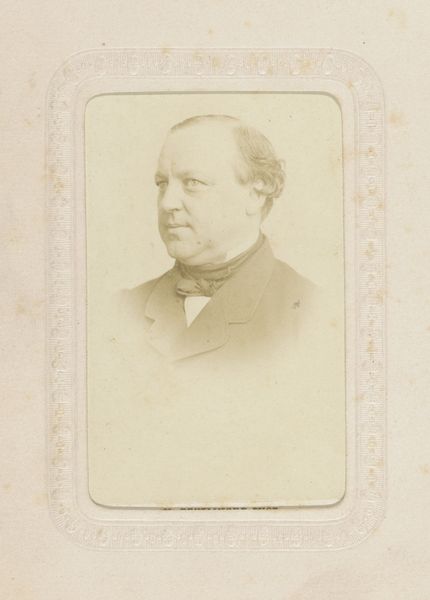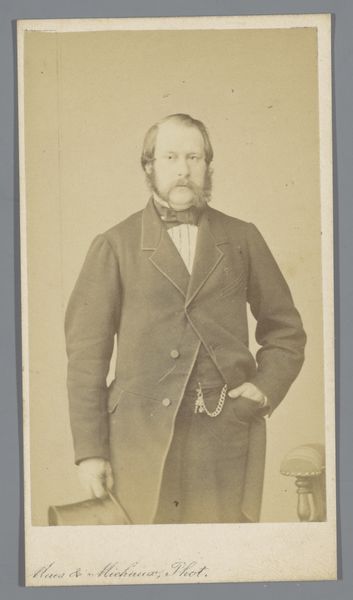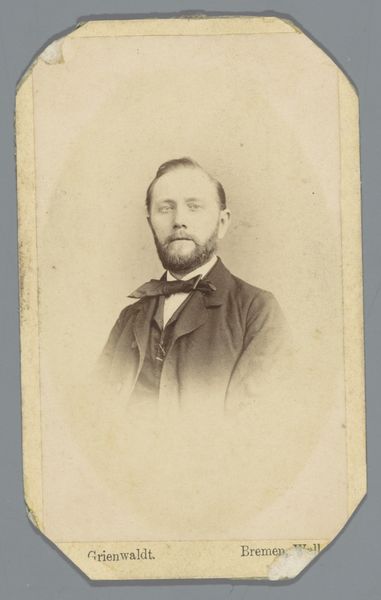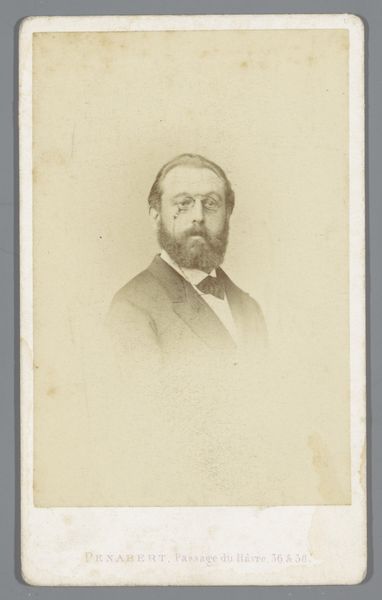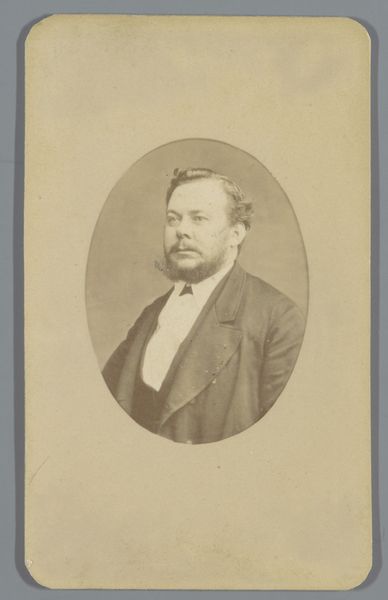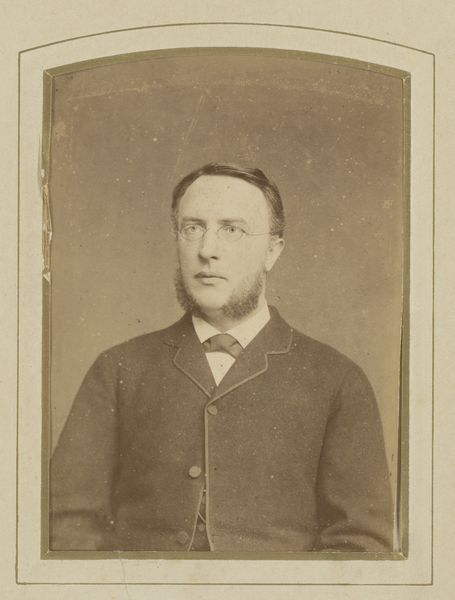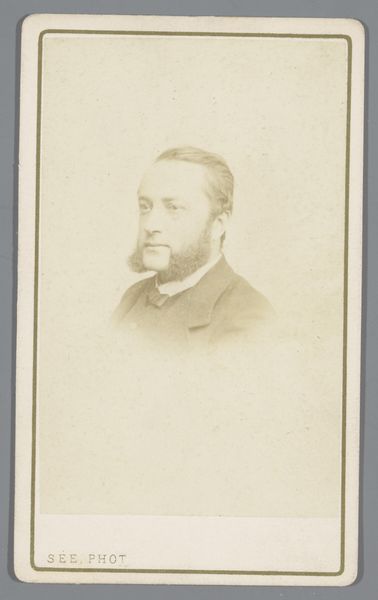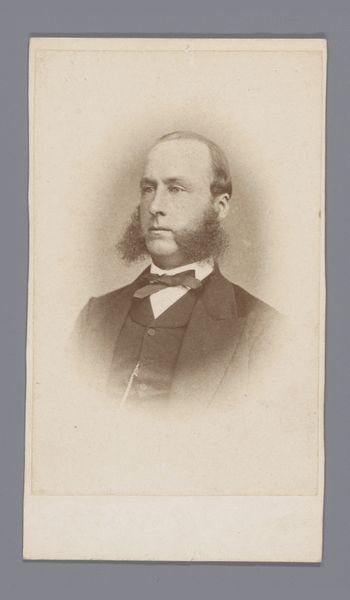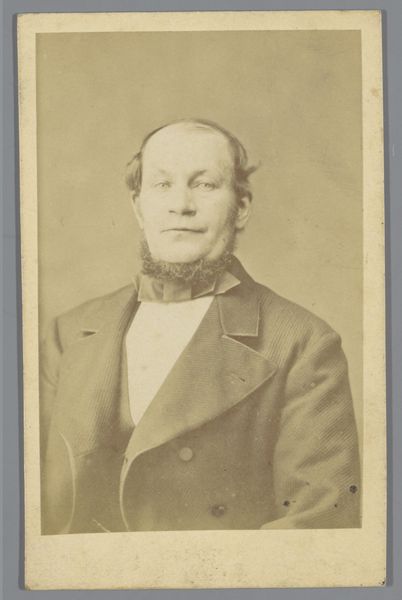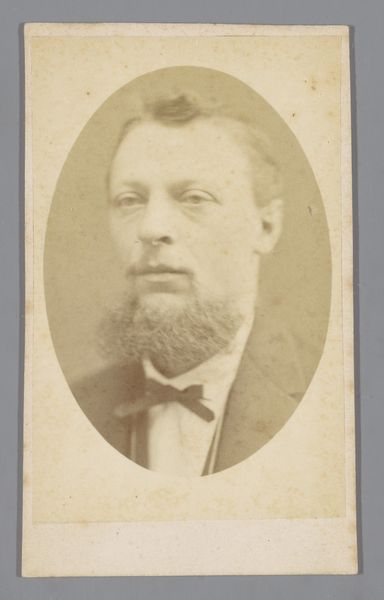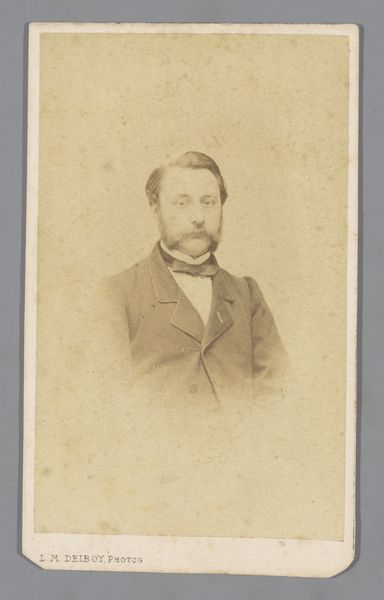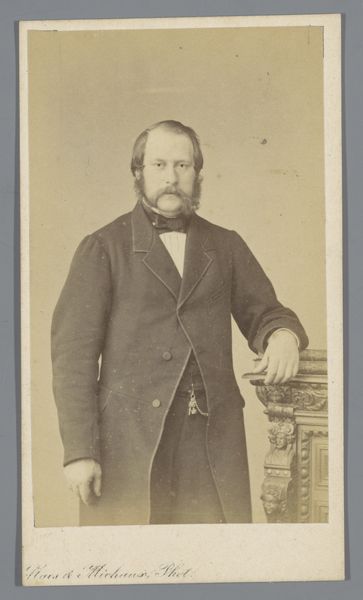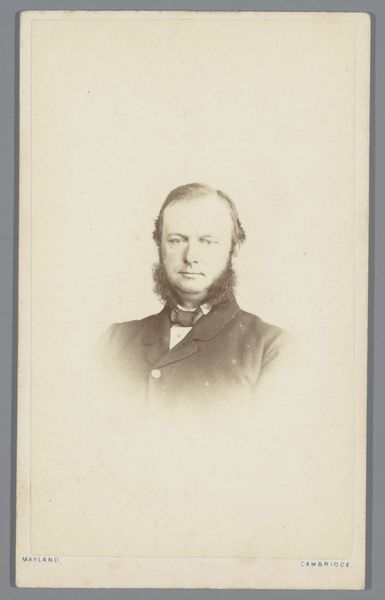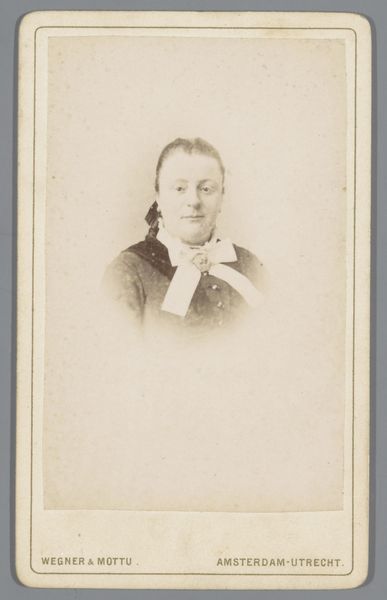
photography, gelatin-silver-print, albumen-print
#
portrait
#
aged paper
#
vintage
#
photography
#
historical photography
#
printed format
#
gelatin-silver-print
#
albumen-print
Dimensions: height 100 mm, width 61 mm
Copyright: Rijks Museum: Open Domain
Curator: Looking at this remarkable example of historical portraiture—"Portret van een onbekende man" by Theodoor Weijnen—one is struck by its somber dignity. It's an albumen or gelatin silver print dating roughly from 1884 to 1904. Editor: The sepia tones definitely contribute to that sense of gravitas, don't they? The oval vignette feels incredibly confining; like the man's identity is being deliberately obscured even as we look right at him. There's something deeply unsettling about not knowing who he is beyond a face. Curator: Precisely. Think about the symbology embedded in these portraits. The formal wear – the dark suit and bow tie – communicates respectability and status. There's a psychological weight, an assertion of identity despite the anonymity you observed. These portraits were more than mere likenesses; they were statements about the self within a specific social milieu. Editor: And I wonder about the missing narratives? This portrait exists amidst significant sociopolitical upheaval, particularly around class and identity. Whose stories were deemed worthy of documentation, and whose were systematically erased? This photograph becomes a starting point to consider who is visible in our archives, and perhaps more critically, who is not. Curator: That resonates. This is a deliberate act of memory keeping, or an act of rendering permanence, especially considering the materials and process that Weijnen used. Gelatin silver or albumen printing were established ways to make photographic portraiture permanent, durable; embedding them as social signifiers into our culture. The very survival of the print allows this man, now nameless, to exist within our cultural consciousness still. Editor: This photograph also prompts a meditation on the colonial gaze embedded in early photography. While it doesn't explicitly portray colonialism, the very act of image-making, particularly portraiture of this era, played an instrumental role in shaping perceptions of otherness and power. Even in portraying a Western sitter, the inherent power dynamics remain potent. What narratives did these images suppress to create certain ideas about progress or the role of man? Curator: That’s insightful. We tend to focus on the portrayed individual. Yet, viewing historical photography, it’s critical that we also focus our analytical eyes on both photographer and photographic technology, which in turn help create collective historical, societal narratives. This dialogue is powerful, isn’t it? The symbology invites interpretation that’s ongoing even now. Editor: Absolutely, art continues to pose these important critical questions about our society today and in the past, creating a feedback loop. Even an “unknown man” compels us to reckon with broader systemic concerns about access, visibility, and whose stories matter.
Comments
No comments
Be the first to comment and join the conversation on the ultimate creative platform.
